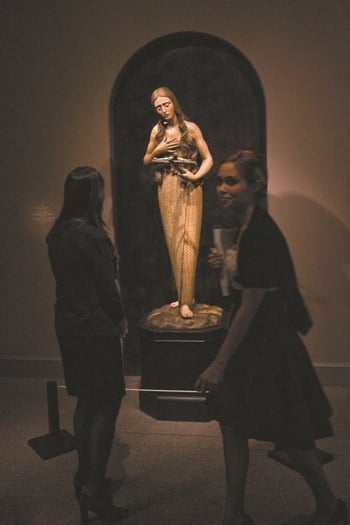
Pope Francis continues to surprise. On 3 June, 2016, the Feast of the Sacred Heart, the Holy Father signed the decree raising the celebration of the memorial of St Mary Magdalene to the higher level of feast.
Archbishop Arthur Roche, Secretary of the Congregation for Divine Worship and Discipline of the Sacraments, in the letter announcing the change, makes two important points.
Firstly, there is the matter of timing: “The Holy Father took this decision precisely in the context of the Jubilee of Mercy to signify the importance of this woman who showed a great love for Christ and was much loved by Christ.”
Secondly, the decision means “one should reflect more deeply on the dignity of women, the New Evangelisation, and the greatness of the mystery of Divine Mercy”.
For centuries Mary Magdalene was identified with the sinful woman in Luke’s story of the visit of Jesus to the home of Simon the Pharisee (Lk 7:36ff).
Institutions and even religious orders that had a particular concern for the “fallen woman” were under the patronage of Mary Magdalene.
In Sydney the Good Samaritan Sisters conducted St Magdalene’s Retreat at Tempe and provided care for adolescent girls referred from the Children’s Court.
In an article published in The Argus (27 January, 1877), John Stanley James recounted his visit to “The Magdalene Asylum” conducted by the Good Shepherd Sisters at Abbotsford in Melbourne.
His language, according to today’s sensitivities, was extreme. He referred to the “lowest and worst kind of outcasts” and praised the work of the Sisters in reclaiming “the new Magdalene”.
Archbishop Michael Kelly presided at the opening of the Good Shepherd Convent in Ashfield in Sydney on 31 July, 1913. The report in The Freeman’s Journal concluded with a comment that fits more comfortably with the spirit of the Year of Mercy:
“In witnessing the effect of love and forbearance upon those who have been bruised and wounded in the battle of life, one cannot fail to be impressed by the Sisters’ noble work of self-sacrifice.”
Apart from being identified with sinful women, Mary Magdalene has been misrepresented by those who suggest some illicit relationship with Jesus.
I still recall the afternoon in 1988 the chief censor invited me and some other Church representatives to a private screening of the movie The Last Temptation of Christ.
There had been press reports of an erotic scene involving Jesus and Mary Magdalene. The movie ended and everyone including the censor was perplexed. The alleged scene was not there.
When I returned to my office at St Mary’s Cathedral I found a copy of the script sent to me by the Festival of Light. Sure enough, the scene was in the script (obviously widely leaked to the press) but did not make the final cut of the movie. Fabulous free publicity for a second-rate movie that sank without much impact.
Dan Brown’s page turner, The Da Vinci Code, went further and had Jesus in a relationship with Mary Magdalene with offspring that eventually became the French Merovingian dynasty. If you are going to write nonsense, make it spectacular and there is money to be made.
There has been a shift in the Church’s understanding of the Scriptural texts and the current emphasis is on Mary Magdalene as the first witness to the Resurrection.
The elevation of her commemoration from memorial to feast puts her on the same level as the Twelve Apostles. The title of the new Preface picks up the title used by St Thomas Aquinas, De Apostolorum Apostola – Apostle of the Apostles.
Pope Francis, through this seemingly simple gesture, wants to shine a light on the special mission of this woman “who is an example and model for every woman in the Church”.
How this might be connected to proposals to examine the possibility of women deacons only time will tell.
What the gesture might stimulate, here and now, is a reassessment of the link between ordination (associated with the Twelve) and apostleship. Mary Magdalene, truly an apostle and evangelist, may not have presided at the Eucharist but that is not the measure of a person’s importance and significance in the Church.
